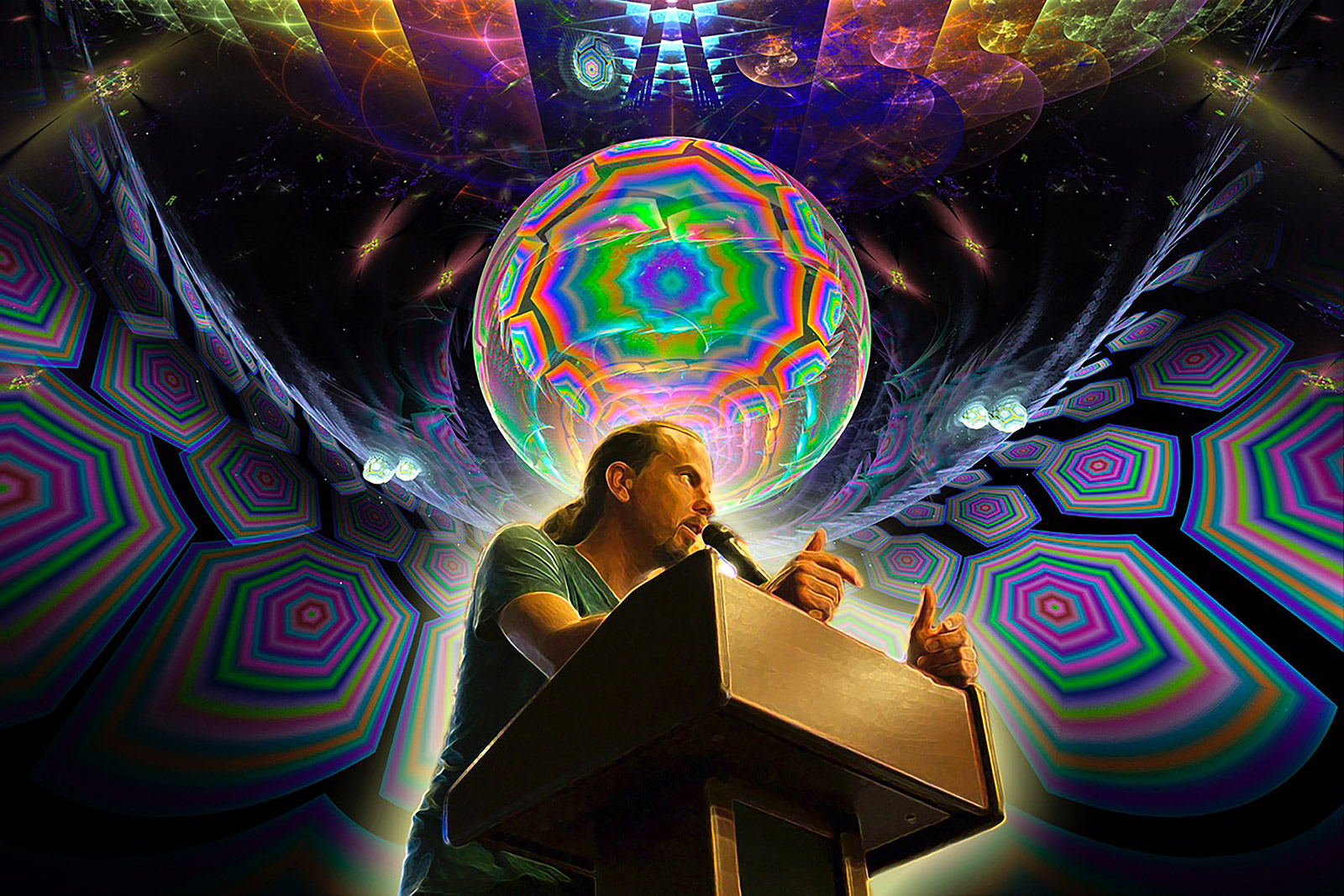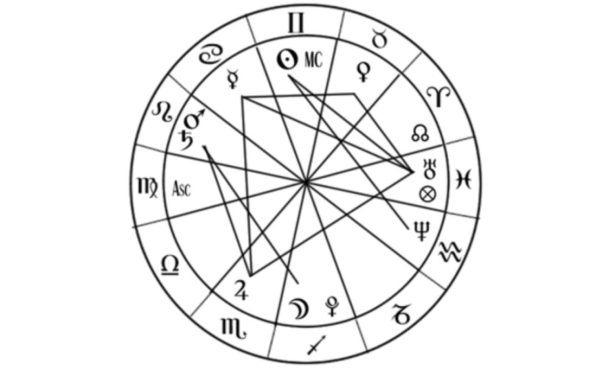Martin Ball’s Modern Psychedelics
Santa Barbara–Raised Professor Comes Home to Discuss Entheogens and Healing

It was a lovely June evening back in 2016, warm with not a single sign of gloom in sight. Paul Simon was onstage at the Santa Barbara Bowl, his sold-out crowd hanging onto every word and greatest hit.
As the last notes of “Me and Julio Down by the Schoolyard” floated in the air, the pint-sized troubadour began waxing poetic about a recent psychedelic experience he had had with a shaman. Simon was palpably giddy as he detailed his inner voyage while using ayahuasca, a powerful psychedelic vine from the Amazon. He even wrote a song about it, “Spirit Voices,” which he was about to play.
The crowd, made up mostly of more-than-middle-aged baby boomers drinking wine, went nuts. They seemed to know all about ayahuasca and the mind-expanding spiritual renewal that Simon was celebrating.
At about the same time, I snorted my drink out through my nose in a horribly embarrassing display of disbelief. I, too, knew all about ayahuasca, but, my lord, I never imagined it being discussed so positively in such staid, civilized company.
Fast-forward 20 months, and I’m on the phone with Martin Ball, a Santa Barbara–born, UCSB-trained religious studies professor at Southern Oregon University. Ball is telling me about a recent Friday afternoon in which he dosed 5-MeO-DMT — a strong psychedelic of the tryptamine class that occurs naturally in certain plant and frog species — and climbed willingly into a giant brain scanner for the sake of science.
“Listen, we are currently in a psychedelic renaissance,” he explained matter-of-factly. “All around the world, we are coming to the same conclusion: that making these types of things illegal is both culturally and medically inappropriate …. There is still much more research to be done, but the initial findings are rather undeniable. These sorts of substances have huge potential benefits, from the spiritual to the medically therapeutic.” Ball was not at all surprised to hear about Simon preaching psychedelics.
Ball, who’ll be speaking in Santa Barbara on March 3, is one of the nation’s most outspoken proponents of psychedelics for both therapy and spirituality. For nearly two decades, the author, artist, and academic has been a leader in entheogenic studies, which examines psychoactive substances, such as ayahuasca and peyote, that induce spiritual experiences. Traditionally, these substances are used intentionally for such an experience, usually with the help of a shaman or spirit guide.
“Anywhere in the world that you find naturally occurring psychedelics, you will also find indigenous cultures that use them for ceremony, enlightenment, and mystical experiences,” explained Ball. “The more you investigate it, the more you can see that this has been going on for a very long time. Even popular religions have entheogens in their origins: Hinduism talks about psychedelics in its early texts; Taoism has the Divine Mushroom; Judaism has the Tree of Knowledge in the middle of the Garden of Eden. Professors don’t often like to talk about it, but psychedelics have always played an important role.” Even today in the United States, Ball pointed out, three religions are legally allowed to use psychedelics as part of their ceremonies.
Ball’s own eyes were opened during a magic-mushroom trip as a fairly serious and studious undergraduate studying philosophy and religion at Occidental College in the early 1990s. “I grew up in a secular home, so it was rather revolutionary for me,” said Ball of his first brush with spirituality. “It was the first time I really said to myself, ‘Okay, maybe there is something to all this heaven and hell and spirit and otherworld talk. Maybe some of this stuff that we can’t always see is entirely real.’ That experience encouraged me to keep looking.”
Thankfully for the rest of us, Ball is not alone on that journey. Over the past year, many medical publications and organizations in America and abroad started talking about psychedelics as real and measurable medicine.
Suffering from post-traumatic stress disorder? Looking to improve job clarity? Depression got you down? At a relationship crossroads with your partner? Recently been diagnosed with a terminal illness? All of these conditions have the potential to be improved by responsible psychedelic use under the care of a doctor, according to the most recent research.
Substance such as MDMA (the main ingredient in ecstasy), psilocybin mushrooms, and DMT are all being explored by scientists as real solutions for serious problems. Even cannabis falls under this category, as the mildly psychoactive plant gains more recognition as a potent medicine for a variety of issues.
“The health system in our country is horrible — that’s no secret,” said Ball. “People are searching for answers and are turning to alternative therapies to help find them. From war veterans to sex-abuse survivors to cancer patients, people are using entheogens to confront their deeply personal issues in a safe setting and transform themselves from there …. In the end, reality will win. There is only so long that you can keep saying that these things have no beneficial use and that they lead to mental derangement. It is just not true, and more and more people know that today than ever before.”
Psychedelics and healing is a topic with which I have very intimate experience, hence the water snorting out of my nose in front of Paul Simon. After years of fancying myself a cosmic explorer and liberal consumer of all things “trippy,” I endured the earth-altering experience of being told I have a terminal and incurable cancer. This big old bummer came in my mid-thirties, with my first child on the way and just months after I’d been diagnosed with PTSD following the unexpected death of my father.
My mind was in a dark place, and anxious thinking became my new norm — not the mindset required when one is about to engage in a fight for your life. I knew that, but I also knew that my mental salvation was not going to be found in some brain-numbing or emotion-highjacking pharmaceutical. Instead, I turned to peyote and LSD to help me reorder my thinking and integrate my new reality.
A few months after my diagnosis, I used peyote in a ceremony to help me explore where exactly this health journey would lead me and to see where I might need to go if I wanted to survive. And then, in the two months before my daughter was born, I used small amounts of LSD on a weekly basis to help stabilize my moods and find a deeper-rooted and sustaining form of daily positivity.
I know, without hesitation, that my intentional use of psychedelics helped me in ways that are beyond measure. They delivered me to the doorstep of peace and acceptance, and I’ve been living more fully ever since.
When I share this with Ball, he is impressed but not surprised. “Wow, so you know then — this is something that is happening, and this is something that is real,” replied the professor. “[Psychedelics] may not keep you from dying, but they will help you find peace with the dying process. And how important is that! The possibility for truly radical medical developments is right here right now. Trying to keep it all suppressed and underground isn’t good for any of us. It is time for some serious social discussion.”
4•1•1
Martin Ball will give a talk titled The Revolutionary Healing Potential of Entheogenic and Psychedelic Medicines on Saturday, March 3, 6-9 p.m., at Unity of Santa Barbara (227 E. Arrellaga St.). For info and tickets, see entheomedicine.eventbrite.com.



